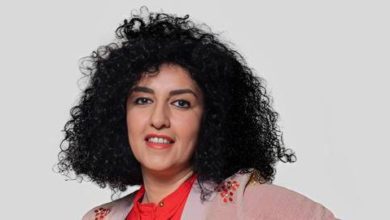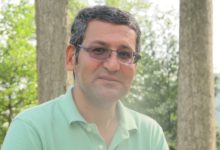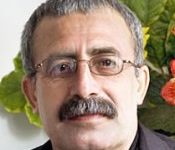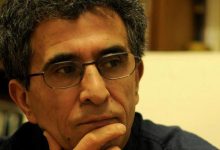Witness Statement of Sara
Name: Sara
Place of Birth: [Redacted]
Occupation: Professor of Political Science
Interviewing Organization: Iran Human Rights Documentation Center (IHRDC)
Date of Interview: 4 August 2012
Interviewer: IHRDC Staff
This statement was prepared pursuant to an interview with [redacted]. It was approved by [redacted] on August 4, 2012. There are 36 paragraphs in the statement.
The views and opinions of the witness expressed herein do not necessarily reflect those of the Iran Human Rights Documentation Center.
*Pseudonym assigned to the witness
Background
1. My name is Sara. I am a professor of political science. I received my doctorate from [redacted] and I currently teach at the university level.
Experience with the educational system in the Islamic Republic
2. [Discussing] the educational system in Iran is a complicated matter. Much of [those complications] can also be found in the educational systems of other nations with ideological systems. It’s valuable to analyze [the educational system in Iran] from this perspective. Consider the models in the former Soviet Union, China, and [other] ideological regimes. Their educational systems feature a series of specific advertisements aimed at culturally and socially assimilating their students.
3. Of course, I should preface this by saying that cultural and social assimilation of students is also a function of educational systems in the Western world—that is to say, in democratic systems. After all, [the subject of civics in a] democracy contains a series of tenets taught to children in schools from a very young age. But this [process] is different from [the process of] teaching children the principles of an ideological regime.
4. Therefore [Iran’s] educational system should be investigated with this understanding. The second category that increases the complexity of the educational system and may be unique in its ideological and formalized nature is the existence of a class of private schools known as not-for-profit [schools]. So while we have an official educational system of state schools, [we also have] these not-for-profit schools that gradually emerged after the end of the [Iran-Iraq] War in the 1980s. [Now] we have public schools, state schools and not-for-profit schools. Personally I don’t know what public and state schools are and what distinguishes them from not-for-profit schools. Nonetheless we have this variety, and yet all of these [types of] schools are [administered] under the same ideological system.
5. The system naturally has some peculiarities of its own, such as the presence of state propaganda. So for example I, as a seven-year old [elementary school] student, was cultivated in such a way as to be a good citizen of the Islamic Republic. And what is a good citizen of the Islamic Republic? [A good citizen of the Islamic Republic is] someone who subscribes to the doctrine of velayat-i faqih[1], subscribes to a certain version of Shi’a Islam, who understands history in the way that the government has predetermined, and so on. From the very beginning, this shapes your world view in a way that is completely different from education in an open system. This is the general condition.
6. In addition to this, we also have a quota system that reinforces the restrictive nature of the educational system in Iran. When one enters the higher grades [in high school], whether in the not-for-profit schools, public schools or state schools, one can’t be admitted in a normal fashion. In this [already] restricted system, [opportunities] become yet more limited. A student who fills certain quotas can be admitted. These quotas usually involve connections with organs of the government: they can be connections to the military, the Basij[2], or the Islamic Revolutionary Guard Corps [IRGC].[3]
7. When students enter universities, admission becomes even more limited. If a student is the child of a martyr[4], has been to the front him/herself, or has government connections then that student takes precedence [over students who do not have any of these relationships]. Hence all of these factors act to limit students’ opportunities, whereas an educational system’s [ideal] function is to provide more opportunities for students.
8. Simultaneously students also must deal with official propaganda, the [Ministry] of Education, and a representation of history that is constantly manipulated.
9. In an [educational] system like this, working, studying and researching has a different meaning than it does in open systems. We are faced with multiple forms of discrimination from the very first year that we enter school. If one lacks organizational, familial and ideological connections, one is gradually eliminated [from the educational system]. But due to the cultural underpinnings of Iranian society—which has held the accumulation of knowledge and learning in high regard since antiquity—families nonetheless send their children to the best schools and encourage them to study more or even send them abroad [to continue their studies].[5]
10. Consider that in Arab countries and Turkey, [families] are faced with the same third world problems that we are. However, families in those countries do not focus on culture and education as much as in Iran. This is only my personal experience.[6] In Europe one can find students from Turkey or Arab countries, but instead of studying, many of them enter the job market and pursue careers in business, whereas Iranian students primarily seek opportunities to study. This occurs because there is a social value ascribed to claims [of education due to a] tradition of intellectualism and scholarship. Look to Persian literature, look to legal literature, and even look to Kelileh va Demneh,[7] wherein even animals are encouraging the reader to study and accumulate learning. Nowhere [in Persian literature] are readers encouraged to pursue monetary enrichment.
11. I believe that the reason that this [restrictive educational] system has not been as effective as in neighboring countries is the presence of this tradition of intellectualism and scholarship. Otherwise [this educational system] could have shattered our society, because [the forces behind it] are strong. Oil money is pumped into society and numerous newspapers and magazines distribute propaganda to benefit the government, but up to now the Iranian people have proven that they cannot be controlled in such a manner. A valuable example of this is that when a conference regarding Iranian issues is convened outside of the country, people risk their lives to attend.[8]
12. In my opinion, this is because society has the tools to struggle against the government face-to-face. Problems related to official, government-controlled, and propaganda-filled education first emerged in Iran in the Reza Shah [Pahlavi] era[9], but conditions weren’t as bad compared to today’s situation, especially with regard to the era after the 2009 election, [after which] the firing of professors, the expulsion of students, threats against and suspensions of [individuals in] both groups [picked up].
Comparison of the pre- and post-2005 eras
13. This has been the general condition since the Revolution [of 1978-79] and in my opinion these conditions have deteriorated since [the election] of 2009. The Ahmadinejad administration, which came to power in 2005 and consolidated its position in 2009 in a certain fashion[10], had [a specific] policy in only one area [before taking power]: culture.
14. As you may recall, Mr. Ahmadinejad’s very first speech [after taking office] in 2005 stated that “we [the Iranian people] do not want secular professors in our universities.”[11] This was a new departure in the post-revolutionary era. Up until then, they [the authorities] would go after secular students [but not secular professors]. In the interest of repressing the students’ movement, the disciplinary committees, propaganda [arms], Basij and herasat[12] monitored students. But now they are formally monitoring professors as well.
15. Mr. Ahmadinejad’s administration had no codified program for any aspect [of government]. In his election advertisements he would often claim that he was opposed to the capitalist order, to capitalism, and, for instance, that “capitalism is a corrupt system.” He spoke of social justice, but the first [institution] that Mr. Ahmadinejad inaugurated [after taking office] in 2005 was the Tehran Stock Exchange.[13] If you are on the side of social justice, then you [should] consider stock exchanges to be the symbol of capitalism. [In that case,] what business do you have at a stock exchange? This highlights his lack of a plan [when he took office]. But he had a plan for the universities. This is clear because he spoke of firing secular professors. We had never seen anything like that after the Revolution. Not even Khomeini himself ever said anything of that sort. [14]
Termination from [redacted]
16. I recall that I was teaching at the [redacted] university. [Some time] after [Ahmadinejad’s] speech in 2005, around ten professors were fired from the university. I was among those fired from the [redacted]. They never presented any justification, either. They don’t provide formal discharge papers which would allow you to dispute your termination; instead, they just tell you [verbally] that you can’t come [to the university] anymore. They did not officially fire me. They simply told me not to return.
17. My termination was carried out by the student Basij [of the university][15], an organization that has no formal authority [in university administration]. The university has a president, a vice president for academic affairs, and a human resources board that deals specifically with professors. In that case who are the student Basij to tell me what to do?
18. Despite the fact that they are students, it is not evident to whom they are connected and from where they are funded. Furthermore they never leave any information that may allow them to be accountable in the future. They fired not only me, but six or seven of my colleagues as well. We protested to the university administration, and the president of the university responded that the matter was out of his hands.
19. At that time the president of [redacted] was [Dr. Abdollah] Jassbi[16], and the Hashemi [Rafsanjani] family still had power.[17] Compared to state-run universities, it was in a better position, and in general, conditions at the state universities are much more dangerous. We didn’t rely on state universities much from the very beginning because they were rife with restrictions.
20. After my termination I began working for Kargozaran newspaper[18], and after one year of being unemployed I was able to find work at the [redacted, a university in a provincial city]. Of course simultaneously during that [year of unemployment] I was busy writing my doctoral dissertation and consequently even if I had a job I wouldn’t be able to work very much.
21. Hence I went to [redacted], but if my situation had not been as it was I would not have left Tehran. I am from a family that originates in [redacted] and I was born in [redacted], but I would’ve preferred to be in Tehran where I was residing at the time. I was fired in 2006, then I worked for roughly two years at the newspaper and then in 2008 I moved to [redacted]. Kargozaran was also Hashemi Rafsanjani’s newspaper.
22. After I was hired by the university in [redacted] there was no problem. [Those responsible for my termination] did not pursue me. One of the advantages of the [system of universities where I worked] is that one has more ability to maneuver. Since state universities are interconnected a professor who is fired from one of them does not have the opportunity to find work in another one unless they are able to sort out their file; in practice this means that they have to confess that they made a mistake [pertaining to the charges on which they were terminated] and that if they said something [to cause their discharge], that they did not mean anything [controversial] by it. There is a specific office in the Ministry of Education that deals with these cases.
23. [My termination typifies] one model [for the termination of university professors]. Another model is to cancel a professor’s classes. [When] they don’t enroll students in a class, what am I supposed to do as a professor with no students? In reality, they’ve instituted a number of [changes] since 2005 that have made the situation significantly worse.
24. I didn’t have any encounters with the herasat during my days as a student or as a professor. As a student, it was because I did not do anything to cause myself that kind of trouble. Some people unwisely create trouble for themselves regarding hijab or political matters, but I tried to avoid that because it wasn’t worth it. But many did [have to deal with the herasat, and] they would find themselves suspended by disciplinary committees.[19]
Limitations on scholarship
25. Conditions are much worse in Tehran. The forces that were unleashed [in 2005] force students and professors out of their universities and suppress their research. I have more of a feeling of security in [redacted]. My friends in other provincial cities, including even Qom[20], also feel freer, whereas Tehran—a city of 12 or 13 million where political propaganda pours forth from the walls [in public spaces]—is much more rigorously controlled. If [the capital was not under such tight surveillance] there would be a Green Movement every day in Tehran. But the provincial cities in Iran have a certain [metaphorical] distance from the center and consequently repressive forces are not as strong. On this count I do personally prefer [teaching in] a provincial city.
26. The security services have the same modus operandi in the provincial cities as they do in Tehran, but they have less power in the latter—and by power I mean the ability to use force [to get desired outcomes, for instance,] to impose their will on me as a professor. This imposition of will is the Weberian definition of power.[21] This isn’t a matter of wealth or ambition, but a matter of people with connections to Tehran being able to impose their will.
27. Furthermore since 2009 [Iran] has gone down a path of no return with regard to the Islamization of the social sciences. [In a matter of years,] the pedagogical culture that students and professors of the social sciences in Iran’s universities had consolidated little by little since the Revolution ceased to exist. I no longer have any hope for the social sciences in Iran. The only exception may be Islamic studies, specifically modern Islamic studies as it is taught in the West.
28. Sociology, political science, law and psychology have suffered severely. I have no hope for the future of those fields [in Iran], because the government takes this issue seriously. The first field of study that they [the government] dissolved was women’s studies, which was converted to women’s rights in Islam.
29. As a political scientist, unfortunately the topics that I can cover are limited. This is one of the major obstacles we [professors of political science] face in our classes—it’s one of the difficulties of our field. We can’t say everything to our students.
30. My colleagues and I can research any topic we like, but we may not be able to write about them. We have access to all books and articles but of course we can’t tell [yet] how much the budgets of universities and libraries for the purchase of new books have been cut since 2009. We have access, but we can’t publish. One is not free to create just any final product to publish as a result of that [unrestricted] research.
31. At that stage, one is faced with the censorship apparatus of the Ministry of Islamic Guidance.[22] Leave aside for the moment that knowing these limitations I engage in self-censorship as well long before my writing ever reaches the Board of Supervision and Review at the Ministry of Islamic Guidance—meaning that what I write is only an expression of a part of the truth. Next a text will go to the review system [of the university where the scholar teaches, like that] of the [Islamic] Azad University system, then to the Ministry of Intelligence and Security [MOIS]: there are a multitude of institutions in the field [of censoring scholarly works].
32. The editorial boards of Iranian magazines have certain standards [in producing their magazines], as magazines abroad do. We [scholars] hear about these [standards] often, but once again they have a broader meaning [than they do abroad]. Outside of Iran a political science journal will have substantive or methodological standards [for the articles it publishes], but in Iran these standards are not necessarily limited to substantive or methodological considerations. They may be a part [of the vetting process and] they may be used as partial justification [for non-publication of controversial articles]. The other part [of the vetting process for submitted articles] is ideology and whether the author has connections to [those in] power.
33. Restrictions have also been imposed on the instruction of the social sciences, especially political science. When preparing readings for a political science class I always have to be careful not to include texts that say anything that may cause trouble for me. It is always possible that some students with preconceptions or possible connections will complain about me.
34. We generally have one or two of students like that in every class, and they can cause trouble for [professors]. One can’t distinguish which students are likely to do such things at the beginning of a semester, but as the term progresses one can make that determination based on students’ questions, concerns and interests.
35. I have two kinds of classes: internal and external. External classes are the formal ones. Internal classes are held for students whom [I deem to be] safe and who have questions in their minds. Unfortunately the reason for this bifurcation is the [aforementioned] threat [of being reported].
36. I had a student who was suspended and [subsequently] expelled who has intimately faced issues of academic freedom. This student went [to the authorities] and successfully bargained to be readmitted, because the student’s activities were not threatening to the regime. But students who are involved in political organization or sectarian or ethnic rights activism are often in a much more dire state. On the other hand a student who is simply curious and engages in some mischief faces less sanction, but even those types [can] face a variety of sanctions for their actions. And as a professor, for instance, I’ll face more trouble if I join the Participation Front[23] or a Kurdish organization in western Iran than if I’m just an individual with my own criticisms.
[1] Translated as ‘Guardianship of the Jurist’, this is the name of the theory of clerical rule expounded upon by Ayatollah Ruhollah Khomeini. As such, this doctrine underpins the legitimacy of the system of government utilized by the Islamic Republic. See http://www.imamreza.net/eng/imamreza.php?id=4111.
[2] The Basij are a paramilitary organization within the command structure of the IRGC. Members volunteer in exchange for benefits. They serve as auxiliaries to formal law enforcement and were active in the violent repression of the post-2009 election protests. See http://www.pbs.org/wgbh/pages/frontline/tehranbureau/2010/10/iran-primer-the-basij-resistance-force.html#ixzz1Go4AW26i.
[3] The IRGC is a military organization founded after the 1979 Revolution. It has extensive economic and political influence throughout Iran. See http://news.bbc.co.uk/2/hi/middle_east/7064353.stm.
[4] Relatives of those who were killed or wounded in the Iran-Iraq War receive social benefits, including in access to education. See http://www.unhcr.org/refworld/topic,4565c22544,45b8ba182,3ae6ac8170,0,IRBC,,IRN.html. See also http://www.ibe.unesco.org/International/ICE/natrap/Iran_1.pdf, p. 24.
[5] The IMF estimates that over 15% of Iranians with university-level education or higher live abroad. See http://www.imf.org/external/pubs/ft/fandd/1999/06/carringt.htm. See also http://www.payvand.com/news/12/may/1297.html.
[6] While this is conception is shared by some Iranians, statistics, to the degree that they can address such stereotypes, paint a more complex picture. For UNESCO statistics on education in the Middle East, see: http://stats.uis.unesco.org/unesco/ReportFolders/ReportFolders.aspx.
[7] An ancient series of parables derived from the Sanskrit Pancha Tantra depicting anthropomorphized animals. See http://www.iranicaonline.org/articles/kalila-demna-i.
[8] The 9th Biennial Conference of the International Society for Iranian Studies in August 2012. Many scheduled speakers from Iran were pressured into withdrawing from the conference. See http://www.iranhrdc.org/english/news/press-statements/1000000165-restrictions-on-academic-freedom-underscore-events-at-conference-for-iranian-studies.html.
[9] Iran’s modern educational system traces its roots to the early Pahlavi era (ca. 1925-1940). See http://www.iranicaonline.org/articles/education-vii-general-survey-of-modern-education.
[10] The witness is referring to the 2009 post-election protests, which were violently suppressed. See http://www.iranhrdc.org/english/publications/reports/3161-violent-aftermath-the-2009-election-and-suppression-of-dissent-in-iran.html.
[11] In fact, this has become a slogan since Ahmadinejad took office. See http://www.rajanews.com/detail.asp?id=136925 (in Persian).
[12] The herasat are morality police in public institutions, including universities. Cf. http://www.amnesty.org/en/library/asset/MDE13/012/2009/en/6355979b-f779-11dd-8fd7-f57af21896e1/mde130122009en.html.
[13] The Tehran Stock Exchange was founded in 1967. See http://www.bloomberg.com/news/2010-07-24/tehran-stock-exchange-starts-futures-trading-to-attract-foreign-investors.html. The witness may be referring to the Iranian Oil Bourse, a commodities exchange which was first planned in 2005. See http://www.csmonitor.com/2005/0830/p03s01-wome.html.
[14] In fact, the Iranian Cultural Revolution of 1980-87 was primarily initiated to Islamize Iran’s universities. See https://tspace.library.utoronto.ca/bitstream/1807/32402/1/Mojab%20Struggle%20for%20Secularism%20in%20Europe%20and%20North%20America%20revised.pdf. See also http://www.globalsecurity.org/military/world/iran/scrc.htm. For video of a televised discussion regarding this task from the early revolutionary era, see http://www.youtube.com/watch?v=Lu1PJLO3h0c [in Persian]. In fact, developments that began to unfold in Ahmadinejad’s first term led some to claim that the Islamic Republic was instituting a second cultural Revolution. See http://www.pbs.org/wgbh/pages/frontline/tehranbureau/2010/05/cultural-revolution-redux.html.
[15] The Basij are also active in universities through the Student Basij Organization (SBO). See http://www.aljazeera.com/indepth/opinion/2011/12/201112113251815857.html.
[16] Dr. Abdollah Jassbi’s website is available at: http://www.jassbi.net/ [in Persian].
[17] Former President Ayatollah Ali Akbar Hashemi Rafsanjani was among the founders of the Islamic Azad University system and still plays a significant role in its administration. He was recently appointed as head of the Board of Trustees of the University: http://www.mehrnews.com/fa/NewsDetail.aspx?NewsID=1490136 [in Persian] See also: http://www.pbs.org/wgbh/pages/frontline/tehranbureau/2010/07/a-schooling-in-power-politics.html.
[18] A daily newspaper published by the Executives of Construction, a political party founded by Ali Akbar Hashemi Rafsanjani. It was banned in early 2009. See http://www.payvand.com/news/09/jan/1005.html.
[19] University disciplinary committees often suspend or expel students on moral grounds. See http://www.irandailybrief.com/2012/06/04/unprecedented-wave-of-calling-students-before-the-disciplinary-committee-for-violating-the-dress-code-and-moral-issueshttpwww-hra-news-org1389-01-27-05-26-2312458-1-html/.
[20] Since Qom is a center of the Shi’a religious establishment, Iran’s theocratic government takes a special interest in the city. See http://news.bbc.co.uk/2/hi/middle_east/7458709.stm.
[21] For a discussion of political philosopher Max Weber’s theory regarding the exercise of power, see: http://books.google.com/books?id=kgF9bjMoocYC&pg=PA46#v=onepage&q&f=false.
[22] The Ministry of Culture and Islamic Guidance is responsible for vetting all media that is publicly distributed in Iran. It also administers state-run universities. See http://web.archive.org/web/20101126103918/http://iranculture.org/en/nahad/ershad.php.
[23] The Islamic Iran Participation Front is a reformist party that was founded in 1998. Many of its members have been jailed since the 2009 post-election protests. See http://www.princeton.edu/irandataportal/parties/mosharekat/.









